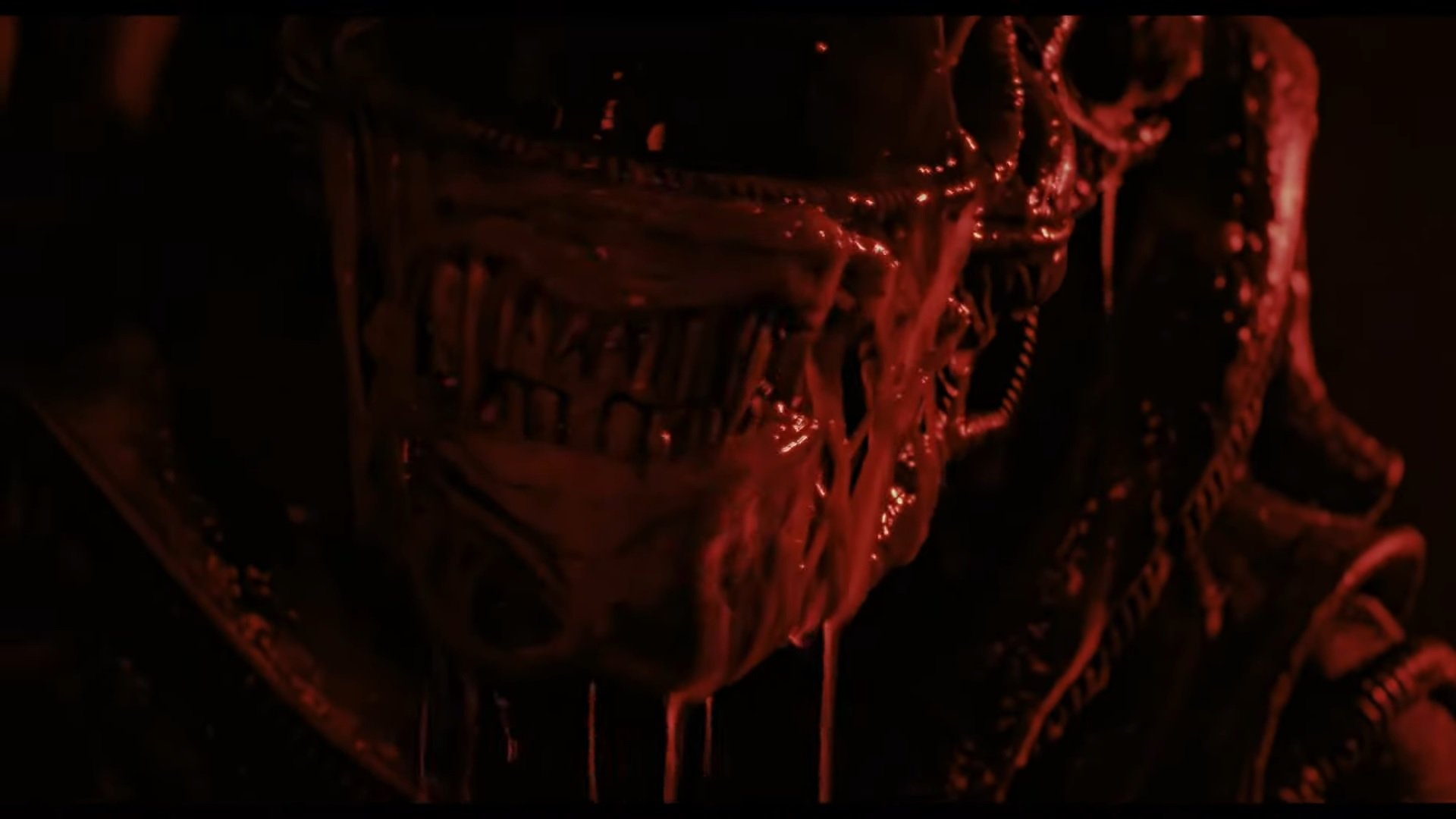You don’t see them fucking each other over for a goddamn percentage
“You know Burke, I don’t know which species is worse. You don’t see them fucking each other over for a goddamn percentage.”
During the memorable face hugger scene, there is another example of limitations working towards the effectiveness of the movie. As this was before CGI became commonplace in movies, animatronics were used. This actually helps with the depiction of the face hugger for a number of reasons. Its movement, skittish, and jerky, a limitation of animatronics, give it that skin crawling creepiness. In addition, having it on camera for too long, or shot close up, would reveal the limitations of the special effects. Therefore it’s shot in such a way that it’s mostly corner of the eye, or frantic quick shots of movement.
This hiding and movement is what makes it great, that and the threat of impregnation to one or both of the characters, a fate worse than death make it a scene of heightened suspense, locked in a room with nothing less than a nightmare in physical form, two of them.
Burke’s fate is sealed as he turns off the monitors showing the room. Though he’s not a not a typical bad guy in the sense of being intimidating or powerful, he is a much worse type of villain, underhand, scheming and traitorous. Taking a sample back for military research could have been a legitimate action to take, but Burke’s lack of humanity, and selling out of his principles in favor of money show us that his intentions on the surface don’t match what is going on beneath the surface. In a way he is worse than the aliens on LV426, he doesn’t need to be forcibly impregnated by a face hugger, there’s already a monster growing inside of him.
The marines come to the rescue, and its here that Hudson’s revival starts. After the aliens’ first attack, he was paralyzed by fear. During the face hugger scene however, you can see that he regains control through action. A powerful lesson contained within a small character study – waiting, non-action, allows fear to take hold. In taking charge, facing his fear, he regains his courage and control of his destiny. He may not make it out alive, but he’ll go out fighting, on his terms.
“We waste him, no offence.”
During Burke’s trial, a key element of Hick’s character is shown here: he listens to both sides in a calm silence, shows reason, and then decides to act once he has heard enough. What demonstrates his character here even further is his echoing of Burke’s earlier line: “no offence.” This was said just after the first attack. Keep in mind what had happened – they had lost half of their team, their commander had been killed, and leadership was the thrust on Hicks. Anybody who went through that much in such a short space of time would have been an emotional wreck, and Burke’s insult would most likely have put them over the edge, but not Hicks. He didn’t react the first time, there were more important matters at hand, but he held onto it and used it at the right time. This shows strategy, patience and timing. This is how a leader acts.
This betrayal is such a heinous act to the team, that their need to dispense justice supersedes the alien threat which is right on their doorstep. Again, another powerful message within the movie. Had the team laid their differences aside and worked together, they would have stood a better chance of escaping LV426. Instead, they are taken down from within, by a traitor, not only to the team, but by extension, humanity, had his plan been successful. This sense of betrayal is so powerful, that they are willing to dispense precious ammo on him, instead of using it to protect themselves.
Burke’s execution is interrupted by a sudden power cut, which kick starts the beginning of the end.
From here on out, it’s a master class in action and suspense.
The next sequence is one of the most memorable in the entire movie. The motion trackers again work to sell the approach of the aliens, with Hudson counting the meters down and Ripley’s line:
“That can’t be. That’s inside the room."
This sequence is masterful: the slow look to the ceiling, the realization that they missed something, and the shot of Hicks as he looks out into the darkness - sheer terror!
As the attack commences, we see Hudson’s redemption. Throughout the movie, he went from fake hero, to coward, to a rebirth of his heroism – as seen during the face hugger scene, it seems that he is at his weakest when he is left alone to think. Whenever he is compelled to act, his fear is replaced by action. Hudson’s death is one of the most memorable, he is vindicated, acting heroically and buying the team time to escape. He goes out like a hero, giving it his all, protecting his team, until he is overwhelmed by the aliens, hand over face. Though not a main character, Hudson is one of the best.
Burke’s demise, is the polar opposite; a cowardly, deserved death. The key point is that it is his own behavior which leads to his demise. All the way through he has been short sighted, thinking of the immediate benefit over the long term consequences. In this scene especially, he has escaped his human captors, but what is his plan beyond that? How was he going to escape from LV426? Had he stayed and fought alongside the team, they may have forgiven him, a heroic last stand against their attackers. However, instead of helping them he has no issue with shutting the door on their escape.
In attempting to seal their doom, he secures his own.








